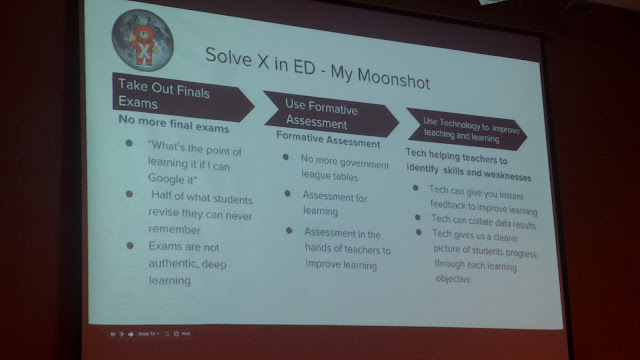I guess education conferences are like buses – you wait ages for one, and then two come along at once, hence my second blog post in a row that is a conference report!
 |
| Delegates settling in before my presentation. |
Last weekend saw the 4th annual Bangkok Google in Education Summit, organised by the team at Apps Events. It was held at the Thai Chinese International School in Bangkok. The main meeting takes place over two days, although there is a pre-summit course for people who are taking one of the various educator certifications offered by Google. There was an additional session, towards the of the event, by my colleague James Sayer, and Davis Apas, which explored these various certifications, including Google Certified Educator, Innovator, and Trainer.
It was my second time at this event, but my first as a presenter. My talk – ‘Becoming a connected educator’ – was by coincidence very timely, since when I submitted the topic I was unaware that October is Connected Educator month! My presentation began with an overview of what constitutes a connected educator, followed by a look at how blogging and Twitter can be useful tools for getting connected as an educator, and finished with reflections on my own journey towards becoming a connected educator and how this has been beneficial for my practice.
In my experience these events are generally less formal than more traditional academic conferences, and there was a relaxed and friendly atmosphere. Each day kicked off with a keynote speech, which on the first day was a brief overview of some emerging trends in education, such as Genius Hour and Solve X in Ed. The following day the keynote looked at the increasing importance of cloud-based computing, and noted that the top ten strategic technology trends in 2015 are related to cloud technology.
 |
| Lee Webster’s Solve X in Ed ‘Moonshot’ – Get rid of final exams. |
Another tool that was demonstrated, and which I’ve known about for a while but not yet tried, was Flubaroo, which can again be used for rapid formative assessment. It has some additional new features, including an option for grading text-based questions as well as multiple choice questions, and is something I hope to try out next semester. The first day ended with a demo-slam, where delegates were invited to share what they learned that day in two minutes, with prizes available for the winning demo-slams.
On the second day there was a useful talk around the use of Google forms for student peer to peer feedback. This is something I will definitely use, and is something I see as being a useful way for students to peer assess each others’ presentations, for example. The other really great tool, presented by Lee Webster, was Google’s My Maps. This is essentially a lightweight GIS package, which is extremely user-friendly and easy to use. I would highly recommend any teachers that incorporate any kind of relatively simple mapping activities to check this tool out. I plan to use it as an addition to the urban biodiversity project I have my students do.
All in all, these Google in Education events are a great way to hear about new tools, new ways to incorporate them into teaching, and to meet like-minded educators in a relaxed and friendly atmosphere.
Republished with permission via http://biologycheewit.blogspot.com/
About the Contributor
Adam Bodley

